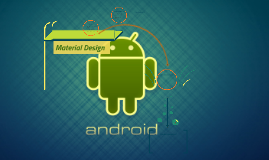MATERIAL DESIGN
Transcript: What are materials? Anything that can be used to facilitate the learning of a language” “Any systematic description of the techniques and exercises to be used in classroom teaching.” Linguistic, visual, auditory or kinesthetic Adopting, Checklist for adopting textbooks C.Physical characteristics 1. Layout a. Space b. Pictures and text c. Highlighting 2. Organization a. Table of contents b. Index c. Answer key d. Glossary e.Reference potential 3. Editorial qualities a. Content is accurate and edited in a manner consistent with your style b. Directions clear and easy to follow c. Examples clear 4. Material quality a. Paper b. Binding c. Tear-out pages Checklist for adopting textbooks D.Logistical characteristics 1. Price 2. Auxiliary parts a.Audiovisual aids b.Workbooks c.Software d.Unit tests 3. Availability E.Teachability 1. Teachers edition a.Answer key b.Annotations to help teachers explain, plan activities, and the like 2. Reviews 3. Acceptability among teachers D. Fill in the gaps 1. From other materials 2. From created materials 3. Teachers as resources 4. Resource file E. Reorganizing 1. Complete the list 2. Reorganize Adapting, E. Creating 1. Find teachers willing to work as materials developers 2. Ensure that all materials developers have copies od relevant documents (program description, goals and objectives, materials blueprint, scope-and- consequence chart, Gantt diagram, or whatever) 3. Divide the labor 4. Work individually or in teams to create the materials 5. Establish resource file 6. Consider working modularly in materials packets F. Teaching 1. Pilot materials 2. Discuss their effectiveness 3. Revise Experiential: provide exposure to the language in use. Developing A. Finding and evaluating B. Analyzing 1. Matches to current objectives 2. Mismatches to current objectives 3. Percent of objectives that need to be supplemented from outside these materials 4. Percent of existing matches that will require revision 5. Decide which set(s) of materials to adapt C. Classifying 1. Use any logical classes of objectives to help you group them for analysis 2. List places in materials where each objective is addressed 3. Leave blanks where supplemental materials are needed Instructional: inform learners about the language. Checklist for adopting textbooks .Materials background 1. Author’s credentials (education and experience) 2. Publisher’s reputation B.Fit to curriculum 1. Approach 2. Syllabus 3. Needs a.General language needs b.Situation needs 4. Goals and objectives a.Percentage of match b.Order 5. Content a.Consistent with techniques used in program b.Consistent with exercises used in program Exploratory: seek discoveries about language use. A. Overall curriculum 1. Approach a) Theoretical bases b) Revise 2. Syllabus a) Organizational Principles b) Revise B. Needs 1. Define 2. Revise C. Goals and objectives 1. Define 2. Revise D. Tests 1. Proficiency or placement Get a fix on overall level 2. Diagnostic or achievement Get a fix on appropriateness of objectives Elicitative: stimulate language use Evaluating material 3 qualities: (strength, lightness, transparency as opposed to weakness, heaviness, opacity) (speech or writing difficult to understand) 3 dimensions: linguistic, social, topical 4 components: occasions for use, sample of language use, lexical exploration, exploration of structural relationships G. Evaluating 1. Evaluate your own materials 2. Revise materials 3. Produce materials in a relatively durable format 4. Consider publishing the materials 5. Remember that materials are never finished that is, consider ongoing materials development particularly in terms of how well all materials are meeting the needs of your students Types of materials

















